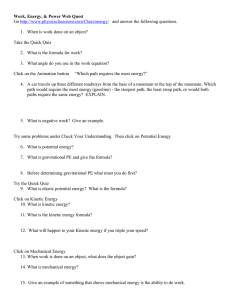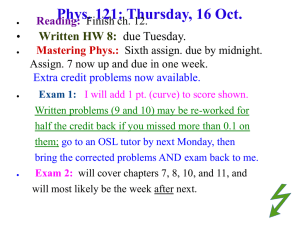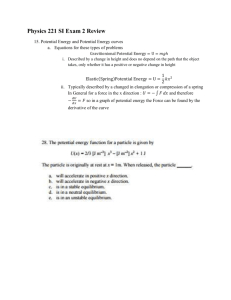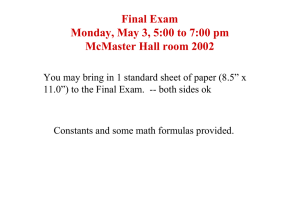Conservation of Linear Momentum Lab – PHY 161
advertisement
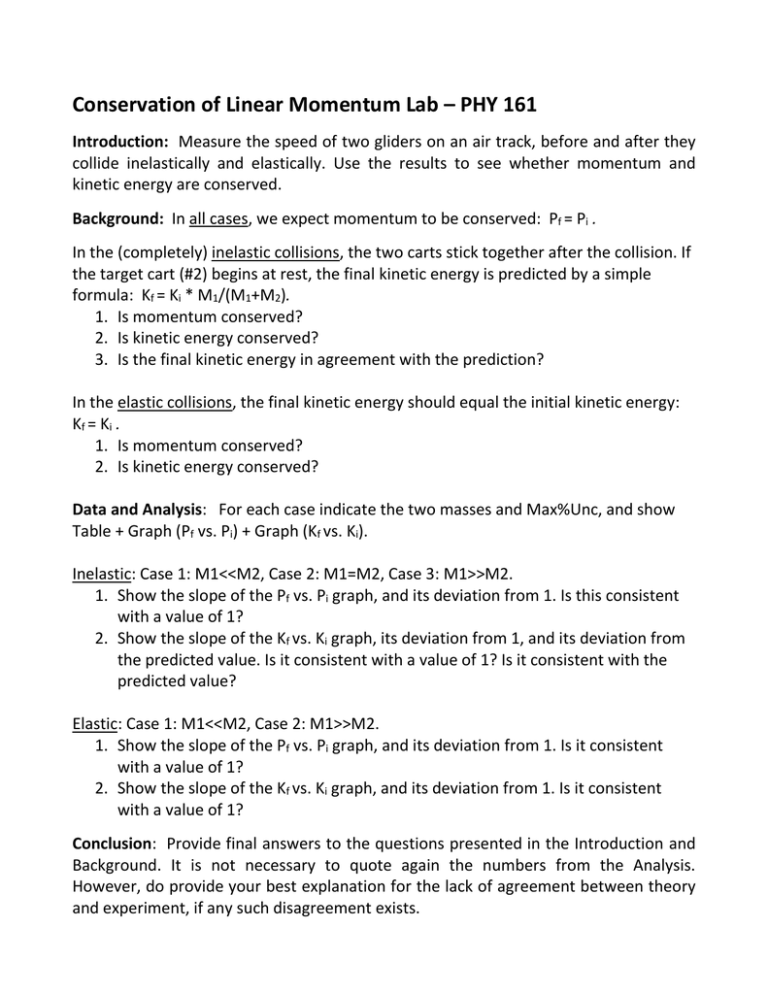
Conservation of Linear Momentum Lab – PHY 161 Introduction: Measure the speed of two gliders on an air track, before and after they collide inelastically and elastically. Use the results to see whether momentum and kinetic energy are conserved. Background: In all cases, we expect momentum to be conserved: Pf = Pi . In the (completely) inelastic collisions, the two carts stick together after the collision. If the target cart (#2) begins at rest, the final kinetic energy is predicted by a simple formula: Kf = Ki * M1/(M1+M2). 1. Is momentum conserved? 2. Is kinetic energy conserved? 3. Is the final kinetic energy in agreement with the prediction? In the elastic collisions, the final kinetic energy should equal the initial kinetic energy: K f = Ki . 1. Is momentum conserved? 2. Is kinetic energy conserved? Data and Analysis: For each case indicate the two masses and Max%Unc, and show Table + Graph (Pf vs. Pi) + Graph (Kf vs. Ki). Inelastic: Case 1: M1<<M2, Case 2: M1=M2, Case 3: M1>>M2. 1. Show the slope of the Pf vs. Pi graph, and its deviation from 1. Is this consistent with a value of 1? 2. Show the slope of the Kf vs. Ki graph, its deviation from 1, and its deviation from the predicted value. Is it consistent with a value of 1? Is it consistent with the predicted value? Elastic: Case 1: M1<<M2, Case 2: M1>>M2. 1. Show the slope of the Pf vs. Pi graph, and its deviation from 1. Is it consistent with a value of 1? 2. Show the slope of the Kf vs. Ki graph, and its deviation from 1. Is it consistent with a value of 1? Conclusion: Provide final answers to the questions presented in the Introduction and Background. It is not necessary to quote again the numbers from the Analysis. However, do provide your best explanation for the lack of agreement between theory and experiment, if any such disagreement exists.

